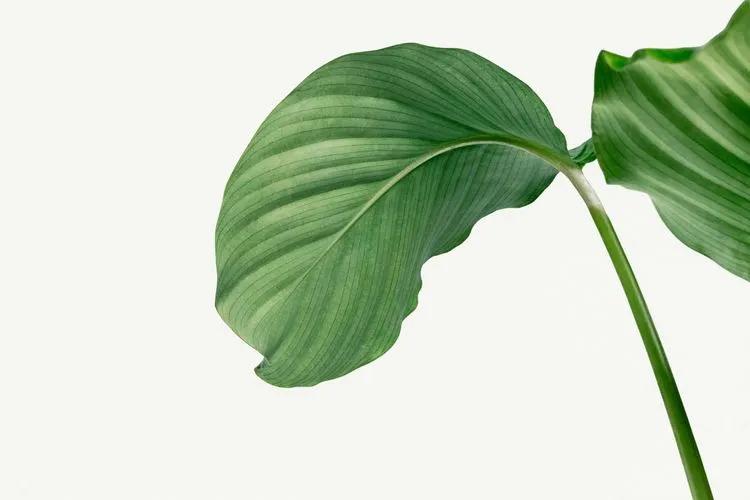 Calathea Orbifolia is a medium-sized herbaceous perennial with exotic foliage. The height of Calathea Orbifolia ranges from 40 to 60 cm.
Calathea Orbifolia is a medium-sized herbaceous perennial with exotic foliage. The height of Calathea Orbifolia ranges from 40 to 60 cm.
The area of Calathea Orbifolia is the tropical forests of South and Central America. In conditions of high humidity and constant heat, protected from aggressive ultraviolet radiation, the plant forms large colonies.
Leaves
Calathea Orbifolia has large, almost regular, rounded leaves that sit on erect tall petioles. The leaf blades are thin, with slightly wavy edges. Stripes radiate from the central vein in both directions, forming a beautiful ornament on the front surface of the leaves. The seamy side of the leaves is uniformly green. Dark green lines on the leaves of Calathea Orbifolia alternate with lighter ones. It is noteworthy that the width of both is the same.
Flowers
In culture, the plant most often refuses to bloom. In nature, on a short peduncle, small pale flowers with greenish bracts are collected in a spike-shaped inflorescence
Temperature
Calathea Orbifolia is thermophilic. Dislikes sudden changes in air temperatures. In winter, the plant feels good at + 18 ° C, in summer it prefers values close to + 25 ° C. In especially hot summer, to “compensate” for the inconveniences, it is recommended to increase the air humidity.
Lighting
 Long daylight hours are a prerequisite for the development of Calathea Orbifolia. It is important to take into account that direct sunlight burns delicate leaf blades, so the lighting should be diffused. In the autumn-winter months, it is advisable to provide the plant with artificial supplementary lighting.
Long daylight hours are a prerequisite for the development of Calathea Orbifolia. It is important to take into account that direct sunlight burns delicate leaf blades, so the lighting should be diffused. In the autumn-winter months, it is advisable to provide the plant with artificial supplementary lighting.
Watering
The plant is watered abundantly from spring to autumn with settled water at room temperature. Then the dose of fluid is reduced while increasing the interval between procedures. Do not allow either the soil to dry out or the accumulation of water in it.
Humidity
Dry air is destructive for Calathea Orbifolia. Regular spraying or installing a humidifier will keep the plant feeling comfortable. It is important to ensure that the water does not remain on the leaves, as the drops harm the decorative foliage. If necessary, the leaf blades can be gently wiped off by moistening a cotton swab with warm distilled water. It is very important to organize ventilation and protect the plant from drafts.
Fertilizer
For top dressing, it is recommended to use liquid fertilizers for decorative foliage plants. In this case, it is better to slightly reduce the dose recommended by the manufacturer. Fertilize Calathea Orbifolia from spring to autumn every three weeks.
Soil
The plant needs slightly acidic, loose soil. It is recommended to dilute a suitable potting mix from a store with perlite or vermiculite. When making the substrate yourself, you should mix sheet soil, peat, sand in a 2: 1: 1 ratio. You can add a few pieces of charcoal to the soil.
Transplanting
Young plants require an annual transplant. For adults, one is enough at three to four years. The size of the new container should be slightly larger than the old one. A prerequisite for transplanting is good drainage and holes for the outflow of excess water.
Reproduction
Calathea Orbifolia is propagated by division. In spring transplanting, a healthy plant is cut into pieces with a sharp knife so that each one gets roots and two or three leaves. Sections are treated with a fungicide. New plants need moisture, warmth, and light shading.
Pests
The scale insect and spider mite more often attack Calathea Orbifolia in dry rooms with low humidity and high air temperatures.
